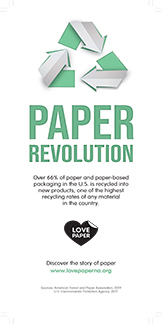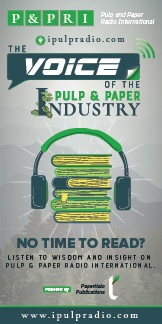As consumers increasingly voice their environmental concerns, industries worldwide are actively seeking sustainable alternatives to reduce their carbon footprint. Not surprisingly, corrugated cardboard packaging has emerged as an environmentally sustainable choice, boasting benefits that other packaging materials simply can't match. Reports and surveys, including a comprehensive life cycle assessment (LCA) recently published by the National Council for Air and Stream Improvement (NCASI) and the 2023 US Trend Tracker Survey commissioned by Two Sides North America, shed light on the environmental impact of cardboard packaging and illustrate why it is fast becoming the preferred choice of brands and consumers around the globe.
Published in October 2023, the 2020 Life Cycle Assessment of U.S. Average Corrugated Product found that the corrugated packaging industry has achieved substantial reductions in the environmental impacts of a typical corrugated cardboard box.
Specifically, the LCA shows a 50% per unit reduction in greenhouse gas emissions between 2006 and 2020, tackling the most urgent and predominant causes of climate change. Meaningful reductions were also achieved in ozone depletion (13%), energy usage (13%), water usage (18%), acid rain (41%), smog (44%), respiratory effects (54%), and eutrophication, which leads to algae blooms and dead zones in bodies of water (30%).
The industry achieved this progress through energy improvements, the creation of a strong recycling infrastructure, sustainably managed forests, and a commitment to continuous environmental improvement. The industry continues to shift to cleaner burning fuel, has increased its participation in a greener U.S. electric grid, and made investments in energy efficiency.
Raw Materials
Cardboard packaging is a standout choice in terms of raw material sustainability. Using wood fiber from purpose-grown, sustainably managed forests ensures that the extraction process is both responsible and renewable. The LCA reveals that sustainable forestry practices, when paired with efficient management, contribute to the overall favorable environmental profile of cardboard packaging.
The fresh wood fiber used to manufacture cardboard, which is continually renewed in sustainably managed forests, aids in the removal of carbon dioxide from the atmosphere, while recycling old corrugated cardboard avoids carbon dioxide and methane emissions from landfills. This combination of fresh and recycled fibers in cardboard production maximizes fiber reuse and enables circularity.
Manufacturing Processes
Significant advances in manufacturing technology and processes have increased efficiency and decreased energy consumption in cardboard production, leading to reduced environmental impacts. In addition, the industry's proactive approach to water recycling and conservation, along with the increased use of renewable energy, further reduces cardboard's environmental footprint.
Transportation and Distribution
Cardboard's lightweight nature contributes to lower transportation costs and emissions compared to heavier packaging materials. Lighter weights translate into lower fuel consumption during transportation, thereby decreasing the overall carbon footprint. This is particularly crucial in a globalized economy where goods are transported over long distances.
End-of-Life Considerations
Cardboard's recyclability is a critical factor in its circular life cycle, and the corrugated industry has enabled increasingly higher recycling rates with billions of dollars in voluntary infrastructure investment over the past 30 years. According to the U.S. Environmental Protection Agency, cardboard is the most recycled packaging material in the United States. The American Forest and Paper Association reports that the recycling rate for cardboard boxes was more than 93% in 2022.
Consumer Trends and Attitudes: Insights from the 2023 US Trend Tracker Survey
In January 2023, Two Sides North America commissioned its biennial Trend Tracker Survey to better understand changing consumer preferences, perceptions and attitudes toward print, paper and paper-based packaging. The survey, conducted by international research firm Toluna, showed a growing awareness among U.S. consumers about the environmental impacts of packaging materials and a preference for sustainable packaging.
The survey findings reveal that consumers prefer products with paper or cardboard packaging for various reasons, including its ease of recycling and home composting. Half of consumers believe paper-based packaging is better for the environment than other types of packaging, including plastic, glass and metal. In addition to expressing an overall preference for paper-based packaging, 56% of consumers prefer that items ordered online be delivered in paper packaging, up from 52% in 2021. 50% say they are actively taking steps to increase their use of paper-based packaging, up from 41%. 47% would avoid shopping with a retailer that is not actively trying to reduce its use of non-recyclable packaging, up from 39%.
Environmental Misconceptions
Despite the expanding body of scientific evidence supporting the inherent sustainability of paper-based packaging and consumers' efforts to make sustainable choices, many misconceptions about cardboard and its effects on the environment remain. You can help set the record straight by arming yourself with the facts. To learn more, visit www.twosidesna.org/mythsandfacts.























